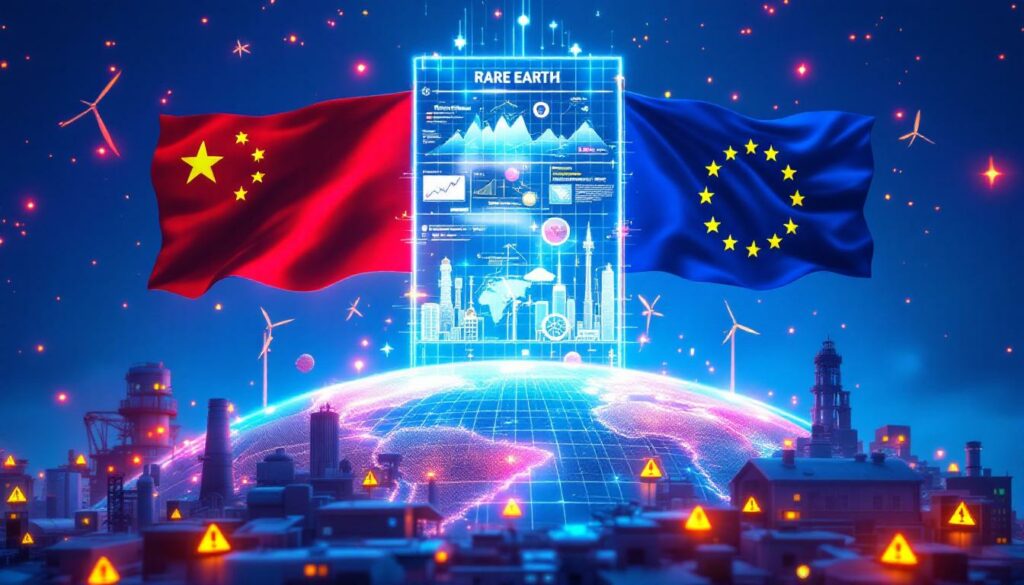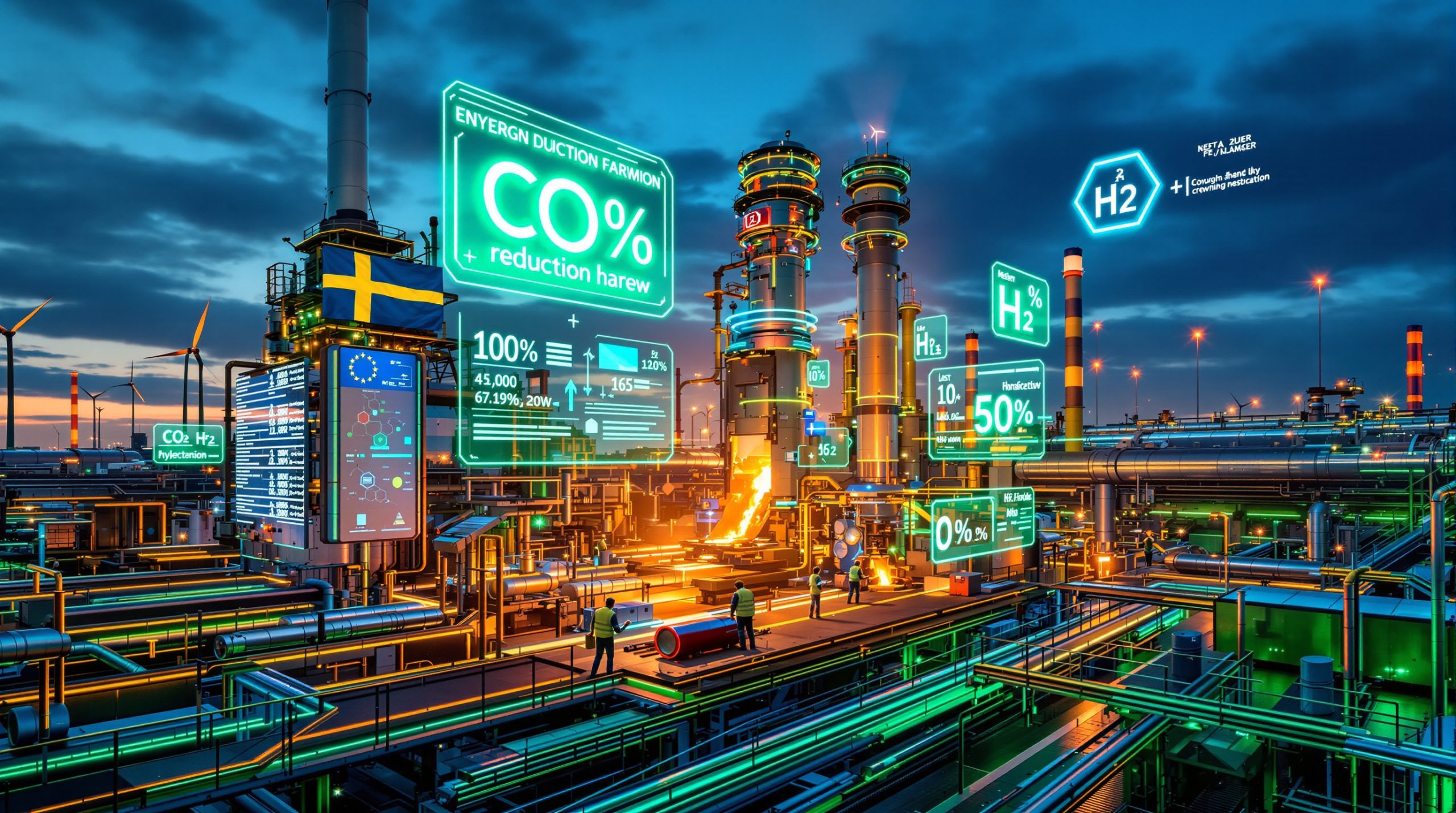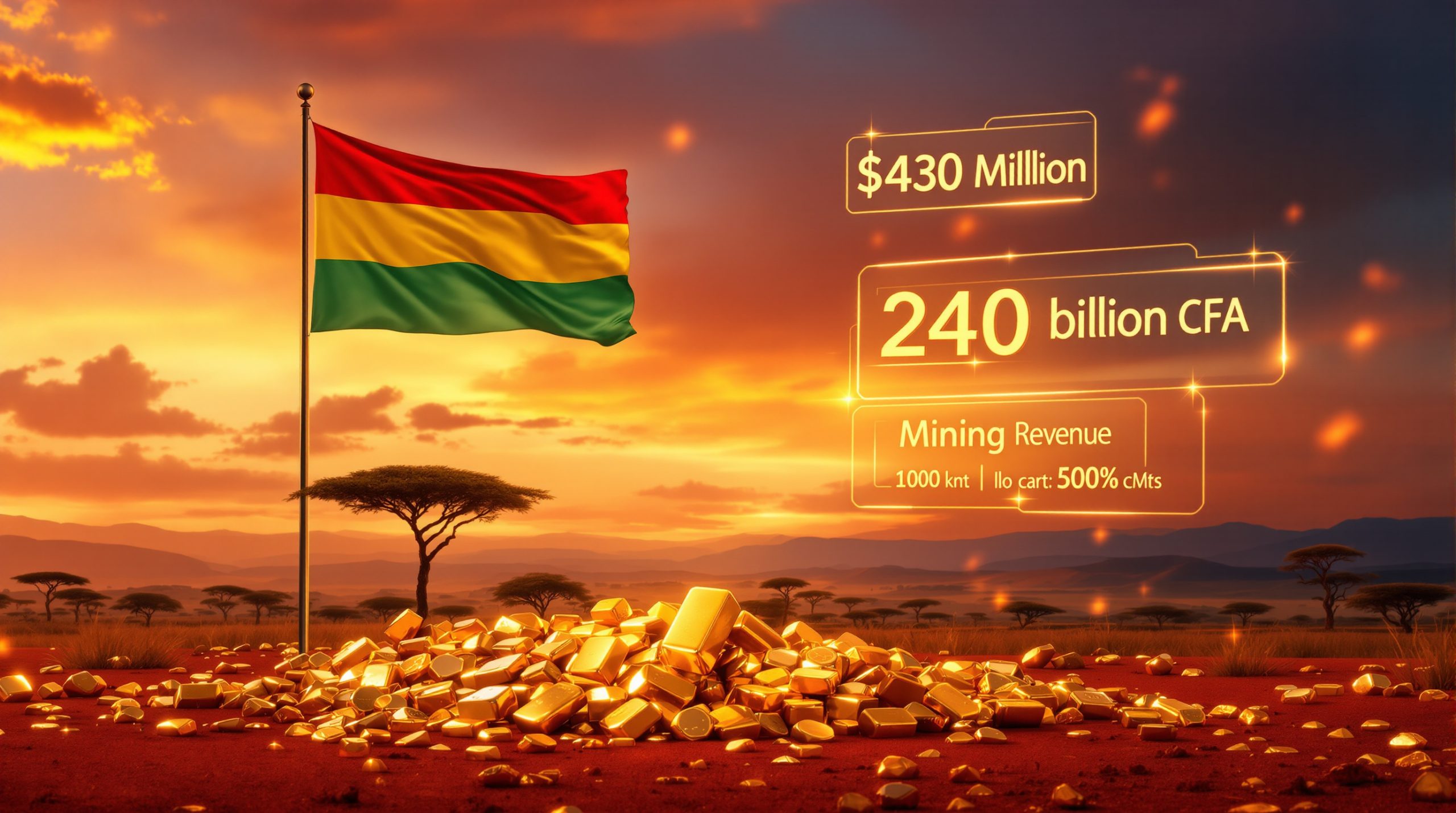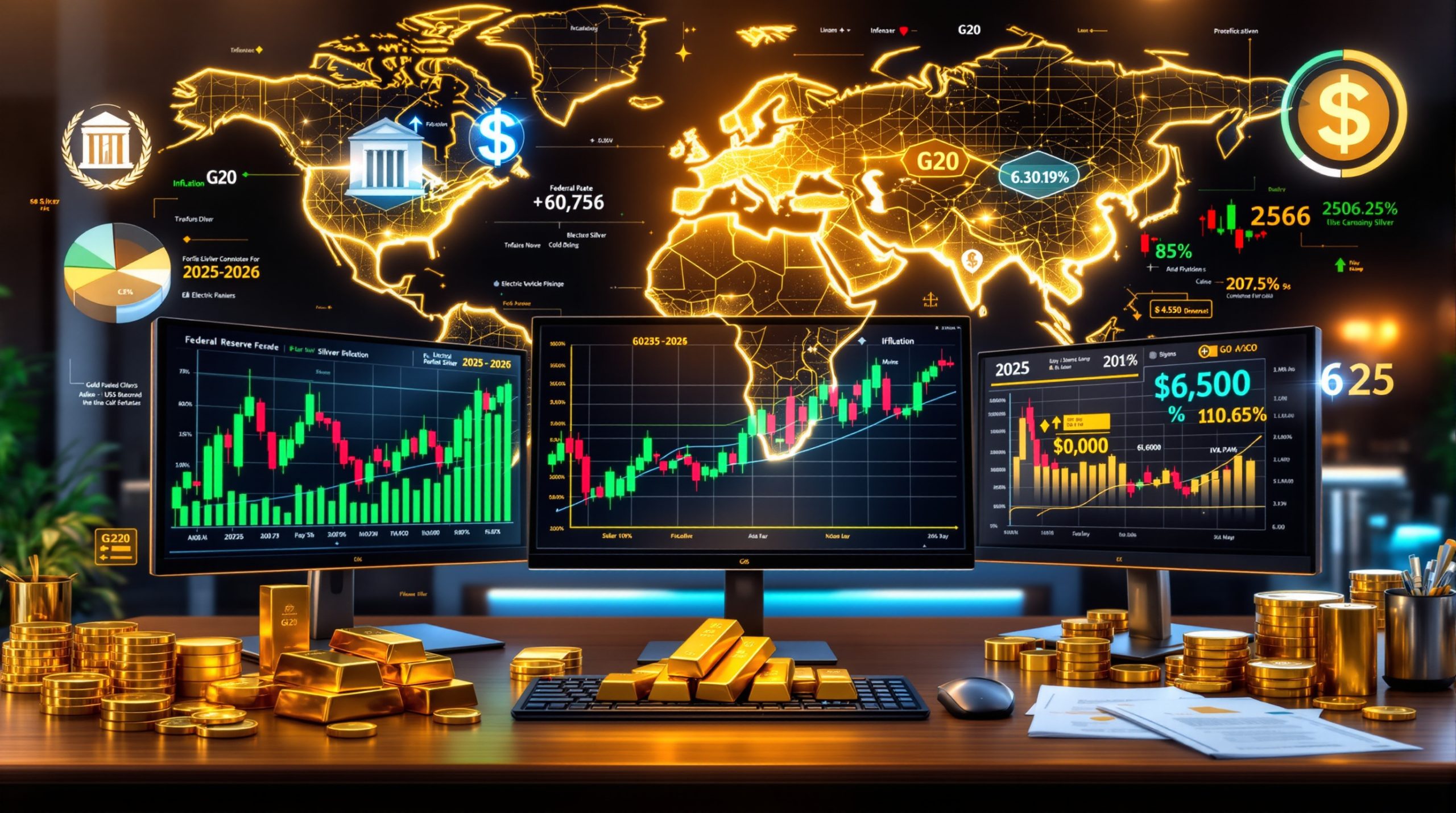China-EU Rare Earth Dispute: Trade Tensions and Global Implications
The diplomatic standoff between China and the European Union over rare earth elements has intensified, with significant implications for global supply chains, green technology development, and international trade relations. This dispute highlights the growing intersection between resource security and geopolitical competition in an increasingly resource-constrained world.
What is the China-EU Rare Earth Conflict About?
China officially rejected the European Parliament's condemnation regarding its export restrictions on rare earth elements on July 11, 2025. The Chinese mission to the EU released a strongly-worded statement urging European lawmakers to "stop politicizing trade and economic issues" and to avoid applying "double standards on export controls" (MINING.COM, 2025).
This diplomatic clash followed a formal motion passed by EU lawmakers on July 10, 2025, which specifically criticized Beijing's policies limiting rare earth exports. The EU's move reflects growing concern about supply chain vulnerabilities and strategic dependencies in critical minerals.
Understanding the Strategic Importance of Rare Earth Elements
Rare earth elements comprise 17 metals with unique magnetic, luminescent, and electrical properties that make them indispensable for manufacturing high-tech products. Despite their name, these elements are relatively abundant in the Earth's crust, but economically viable deposits are scarce and processing presents significant technical and environmental challenges.
According to the U.S. Geological Survey (2024), China currently dominates global rare earth production and processing, controlling approximately 60% of mining output and 85% of processing capacity worldwide. This concentration of supply creates significant leverage that can be wielded for economic and political purposes.
"The EU's extreme dependency—relying on China for 98% of its rare earth imports—represents a critical vulnerability that threatens Europe's industrial autonomy and green transition goals," notes the European Commission's Critical Raw Materials Facility (2023).
How Did the Rare Earth Dispute Develop?
China's Evolving Export Control Strategy
China's approach to rare earth management has transformed significantly over decades. In the 1980s and 1990s, China rapidly expanded production with limited restrictions, which drove down global prices and contributed to the closure of mines in other countries, including the United States' Mountain Pass mine in California.
By the 2000s, China began implementing more strategic controls:
- Production quotas: Limiting output from authorized mining operations
- Industry consolidation: Merging smaller producers into state-controlled entities
- Environmental regulations: Imposing stricter standards on mining and processing
- Export restrictions: Implementing quotas and licensing requirements
A pivotal moment occurred in 2010 when China abruptly reduced export quotas by 40%, causing prices to spike dramatically—some elements increased tenfold. This action prompted Japan, the EU, and the United States to file a complaint with the World Trade Organization, which ruled against China's export restrictions in 2014 (WTO DS431, DS432, DS433).
The EU's Response and Growing Concerns
The European Union has become increasingly alarmed by China's rare earth policies due to several factors:
- Critical manufacturing dependency: European industries from automotive to renewable energy rely heavily on Chinese rare earth supplies
- Green transition imperative: The EU's ambitious climate goals require massive scaling of technologies dependent on rare earths
- Post-pandemic supply chain awareness: COVID-19 exposed vulnerabilities in globally dispersed supply chains
- Strategic autonomy agenda: Growing political momentum to reduce dependencies on geopolitical competitors
The EU's Critical Raw Materials Act, introduced in 2023, aims to reduce these vulnerabilities by diversifying supply sources, increasing recycling, and promoting domestic production where feasible.
What Are the Economic Implications of the Dispute?
Market Impacts and Price Volatility
The tensions between China and the EU over rare earth controls have contributed to significant market effects. According to Benchmark Mineral Intelligence, prices for neodymium and praseodymium—key elements for permanent magnets—have risen by 35% since January 2025, with further increases projected if the dispute escalates.
This volatility creates planning challenges for manufacturers across multiple industries:
- Automotive sector: Electric vehicle production schedules face uncertainty
- Wind energy: Turbine costs become less predictable, affecting renewable energy project viability
- Consumer electronics: Profit margins squeeze as component costs rise
- Defense applications: Strategic systems face potential supply constraints
Supply Chain Vulnerabilities Exposed
The dispute highlights critical weaknesses in global rare earth supply chains that cannot be quickly remedied:
- Processing bottlenecks: While mining operations can be established in multiple countries, processing facilities require specialized expertise and substantial investment
- Technical knowledge gap: China has developed advanced processing techniques through decades of focused investment
- Environmental challenges: Processing rare earths generates radioactive waste and toxic byproducts
- Long development timelines: New mines typically require 7-10 years from discovery to production
"The current supply chain structure took decades to develop and will take years to diversify, even with concerted investment and policy support," explains Dr. Julie Klinger, author of Rare Earth Frontiers (2017).
Why Are Rare Earths So Strategically Important?
Critical Applications in Modern Technology
Rare earth elements are essential components in numerous advanced technologies, with applications that make them irreplaceable in the short to medium term:
| Element | Key Applications | Industries Affected |
|---|---|---|
| Neodymium, Praseodymium | Permanent magnets for motors and generators | EVs, wind turbines, robotics |
| Dysprosium, Terbium | High-temperature magnet stabilizers | Defense systems, EVs, industrial motors |
| Europium, Yttrium | Phosphors for displays and lighting | Electronics, medical imaging |
| Lanthanum, Cerium | Catalysts, glass polishing | Petroleum refining, displays |
| Gadolinium | Magnetic resonance imaging | Healthcare |
The rare earth reserves analysis shows the concentration of these critical materials in Chinese hands provides significant leverage in trade negotiations and strategic competition.
The Green Energy Transition Connection
The dispute has particularly significant implications for climate goals. According to the International Energy Agency (2023), meeting Paris Agreement targets requires a six-fold increase in rare earth supplies by 2040.
Critical green technologies dependent on rare earths include:
- Wind turbines: Each megawatt of capacity requires approximately 200kg of rare earth elements
- Electric vehicles: Modern EV motors contain 1-2kg of rare earth magnets
- Energy-efficient lighting: LED bulbs incorporate small amounts of rare earth phosphors
- Grid-scale batteries: Advanced storage technologies utilize various rare earth compounds
Supply constraints could significantly slow electrification efforts and increase the costs of the Critical Minerals & Energy Transition—potentially delaying climate action at a critical moment.
How Are Other Countries Responding to the Situation?
Global Diversification Efforts
Nations worldwide are pursuing strategies to reduce rare earth dependency, though most initiatives remain in early stages:
- United States: MP Materials secured a $3.9 billion Pentagon deal in July 2025 to expand domestic production at Mountain Pass, California (China rejects EU condemnation over rare earth controls)
- Australia: Lynas Rare Earths is expanding mining operations and building processing facilities with government support
- Canada: The government identified rare earths as strategic minerals in 2022 and is accelerating permitting for several projects
- Japan: JOGMEC has invested in recycling technologies and alternative materials research
- Vietnam: Developing processing capabilities with technical assistance from South Korea
These efforts face significant challenges, including financial viability, environmental concerns, and technical expertise gaps compared to China's established industry.
Strategic Partnerships and Alliances
New international collaborations are emerging to address the rare earth challenge:
- EU-US Trade and Technology Council: Established a working group on critical minerals in 2022
- Quad Critical Minerals Partnership: Australia, India, Japan, and the US announced cooperation in 2023
- Nordic Rare Earth Initiative: Scandinavian countries pooling research and exploration resources
- Japan-Vietnam Processing Technology Exchange: Technical assistance program launched in 2024
These partnerships aim to pool resources, share technical knowledge, and create more resilient supply chains, though tangible results remain limited.
What Legal Frameworks Apply to Rare Earth Trade Disputes?
WTO Rules and Challenges
The dispute raises complex questions about international trade law and the balance between sovereignty and free trade principles:
- GATT Article XI: Generally prohibits export restrictions, with limited exceptions
- National security exceptions: Article XXI allows restrictions deemed necessary for security
- Environmental protection: Article XX permits measures for conservation of exhaustible natural resources
China has previously argued that its rare earth policies are environmental protection measures, not trade restrictions. However, the WTO rejected this argument in its 2014 ruling (DS431, DS432, DS433), finding that China's export quotas violated its WTO commitments.
The current WTO dispute settlement mechanism faces significant challenges, with the Appellate Body non-functional since 2019 due to US objections to appointments. This weakens enforcement options for any new complaints.
Bilateral and Multilateral Agreements
Various agreements influence the dispute dynamics:
- EU-China Comprehensive Agreement on Investment: Negotiations stalled since 2021 but could be revived
- Regional trade agreements: Several contain provisions on critical minerals
- Bilateral investment treaties: Affect legal protections for mining investments
- Environmental agreements: Impact extraction and processing standards
These overlapping frameworks create a complex legal landscape that both sides must navigate in seeking resolution.
How Might the China-EU Rare Earth Dispute Be Resolved?
Diplomatic Pathways
Several potential resolution approaches exist, with China signaling some openness to dialogue. In its statement, China emphasized its willingness to "strengthen communication with the European side" and "properly resolve trade frictions" (China's foreign minister dismisses European worries over rare earths).
Potential pathways include:
- Direct bilateral negotiations: Government-to-government talks focused specifically on rare earth trade
- Industry consultation mechanism: Creating a standing dialogue between producers and consumers
- Sectoral agreements: Developing specific frameworks for critical minerals trade
- Mediated solutions: Involving international organizations as neutral facilitators
- Gradual policy adjustments: Incremental changes through continued pressure and dialogue
The statement that "rare earth exports should not be an issue between China and the EU" suggests China may prefer to deescalate the situation rather than allow it to contaminate broader EU-China relations.
Market-Based Solutions
Beyond government action, market participants are also responding:
- Long-term contracts: Manufacturers securing supply through multi-year agreements
- Strategic investments: Vertical integration through the supply chain
- Price premiums: Paying above-market rates for non-Chinese supplies
- Substitution research: Accelerating alternatives development
These commercial strategies complement diplomatic efforts and may create economic incentives for resolution.
What Are the Long-Term Solutions to Rare Earth Challenges?
Diversification Strategies
Sustainable solutions require multiple complementary approaches:
- New mining projects: Accelerating development outside China
- Processing capacity: Building facilities in diverse locations
- Research into substitutes: Finding alternatives for critical applications
- Recycling and circular economy: Recovering rare earths from waste streams
- Stockpiling policies: Creating buffers against supply disruptions
The European Commission's Critical Raw Materials Act sets ambitious targets, including meeting 10% of EU demand through domestic extraction, 40% through processing, 15% through recycling, and no more than 65% from any single third country by 2030.
Technological Innovation
Research is advancing several promising directions that could reduce dependency in the longer term:
- Reduced rare earth content: Designing magnets that use less dysprosium and terbium
- Alternative materials: Developing iron-nitride magnets and other substitutes
- Advanced recycling: Improving recovery rates from end-of-life products
- Circular design: Creating products for easier disassembly and material recovery
- Process efficiency: Reducing waste and improving yields in extraction and processing
"Technological breakthroughs in magnet design could be the ultimate solution to rare earth dependency," notes Dr. Ping Liu, Director of the Sustainable Power and Energy Center at UC San Diego (2024).
How Does the Dispute Affect Global Geopolitics?
Shifting Power Dynamics
The rare earth conflict reflects broader geopolitical tensions overview:
- Resource nationalism: Growing state intervention in critical mineral markets
- Technology competition: Race for leadership in green and digital technologies
- Supply chain realignment: Moving from efficiency to security as organizing principle
- Strategic autonomy: Nations prioritizing self-reliance in critical sectors
- Bloc formation: Economic relationships increasingly following geopolitical lines
These trends suggest a fragmentation of the global economy along geopolitical lines, with critical minerals as a key battleground.
Implications for International Relations
The dispute signals evolving patterns in global governance:
- Challenges to multilateralism: Bilateral and regional approaches gaining prominence
- Growing emphasis on economic security: Resources seen through national security lens
- Intersection of climate and security policy: Green transition tied to resource competition
- Industrial policy revival: Government intervention becoming more accepted
- Technology sovereignty: Nations prioritizing control of key supply chains
The Defence Materials Strategy developments point to a more complex and fragmented international system where economic interdependence is increasingly viewed as a strategic vulnerability rather than a peace-promoting asset.
FAQ: Understanding the China-EU Rare Earth Dispute
What specific rare earth elements are most affected by China's export controls?
The most strategically significant elements affected include neodymium, praseodymium, dysprosium, and terbium, which are essential for permanent magnets used in electric vehicles and wind turbines. These elements have experienced the most significant price volatility and supply concerns due to their critical applications in green technologies and limited substitution options.
How dependent is the EU on Chinese rare earth supplies?
The European Union relies on China for approximately 98% of its rare earth element imports, creating a critical vulnerability for European high-tech manufacturing and green energy development. This extreme dependency has prompted the EU's Critical Raw Materials Act to reduce reliance through diversification, recycling, and domestic production.
What alternatives to Chinese rare earths are being developed?
Several alternatives are being pursued, including:
- New mining projects in Australia, the United States, and Canada
- Advanced recycling technologies for recovering rare earths from electronic waste
- Material substitution research for reducing or eliminating rare earth content
- Urban mining from landfills and industrial waste
However, most alternatives require several years of development before reaching commercial scale, and none can fully replace Chinese supply in the near term.
How do rare earth export restrictions affect global climate goals?
Export restrictions potentially slow the transition to clean energy by:
- Increasing costs for wind turbines, electric vehicles, and energy-efficient technologies
- Creating supply uncertainties that delay manufacturing and deployment
- Diverting resources to supply chain issues rather than technology deployment
- Potentially encouraging continued use of fossil fuel technologies if green alternatives face constraints
The International Energy Agency (2023) estimates that rare earth supply challenges could delay climate goals by 2-3 years if not addressed through coordinated international action.
What precedents exist for resolving similar resource disputes?
Previous resource disputes, such as China's export restrictions on various raw materials in 2012 and rare earths in 2014, were addressed through WTO dispute settlement mechanisms. However, the current geopolitical climate and WTO challenges make similar resolutions more difficult.
The Japan-China rare earth dispute following the 2010 territorial incident eventually resolved through a combination of WTO action, Japanese diversification efforts, and quiet diplomacy—suggesting that multiple parallel approaches may be necessary for the current EU-China tensions.
Looking Ahead: The Future of Rare Earth Politics
As this dispute unfolds, several key developments bear watching:
- The EU's progress toward its Critical Raw Materials Act targets
- China's internal rare earth industry consolidation and environmental policies
- New technological breakthroughs in substitution or recycling
- The success or failure of non-Chinese mining and processing projects
- Potential new trade frameworks specifically addressing critical minerals
What remains clear is that rare earth elements have transformed from obscure industrial inputs to central players in the geopolitics of technology and climate change. How nations navigate these resource challenges will significantly shape both international relations and the global energy transition in the coming decades.
Disclaimer: This analysis contains forecasts and speculative elements regarding future market developments and geopolitical outcomes. Readers should consult multiple sources when making business or investment decisions related to rare earth markets or affected industries.
Want to Profit from the Next Major Mineral Discovery?
Discovery Alert's proprietary Discovery IQ model empowers investors with real-time notifications of significant ASX mineral discoveries, potentially transformative opportunities like the rare earth developments in the EU-China tensions. Explore how historic discoveries have generated substantial returns by visiting our dedicated discoveries page and position yourself ahead of the market with a 30-day free trial.




